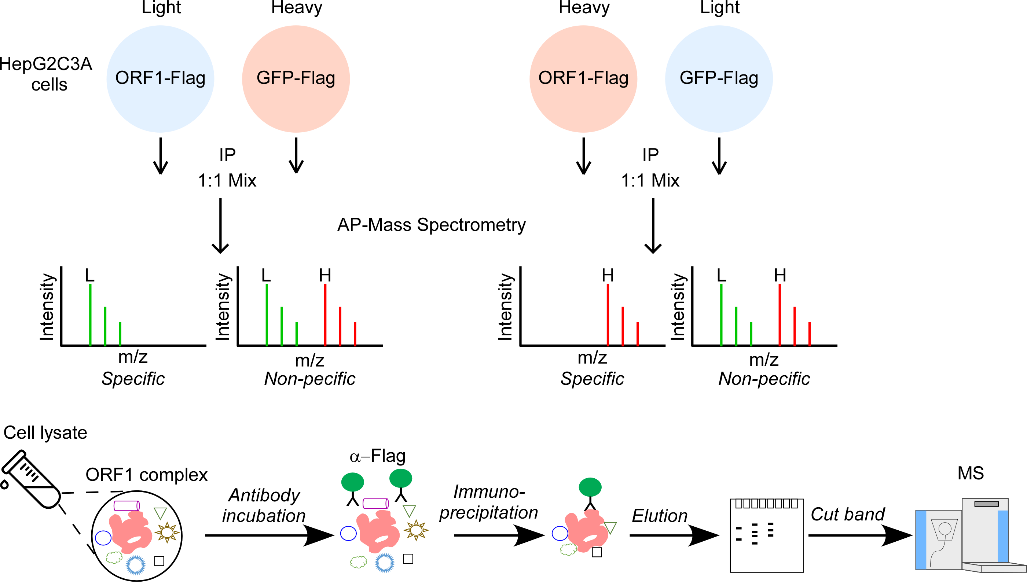Hepatitis E virus (HEV) is the most common cause of acute viral hepatitis in the world. There are no direct-acting antivirals for HEV treatment. The mechanism of HEV replication, especially host factors regulating HEV replication is poorly characterized. Identification of host protein that governs HEV replication could facilitate our understanding to HEV replication and also provide novel antiviral targets. .
A recent study led by Dr. Xiaohui Ju and Dr. Qiang Ding from Tsinghua University, China, used HEV ORF1 trans-complementation system and HEV replicon harbouring HA-Flag tag in ORF1, combined with stable isotope labelling by amino acids in cell culture (SILAC) and affinity purification coupled with mass spectrometry (AP-MS) proteomic approaches, to systematically analyse host factors in HEV replication complex in viral replication condition. They found that PRMT5, WDR77, KIF11, ANKFY1, EIF4B, HSD17B10, STK38, KCTD5 and TAB1 are present in HEV replication complex. Because PRMT5 and WDR77 can form a complex to catalyse protein arginine methylation to regulate protein function, they examined the role of PRMT5/WDR77 complex in HEV infection and replication.
This study further showed that PRMT5/WDR77 restricts HEV replication in a methyltransferase activity dependent manner. Mass spectrometry analysis identified the arginine residue which was methylated by PRMT5/WDR77 in ORF1, and the methylation of ORF1 by PRMT5/WDR77 resulted in the decreased replication capability of HEV, suggesting that PRMT5/WDR77 could act as restriction factor of HEV. Notably, PRMT5/WDR77 exhibited restrictive activity against multiple HEV genotype, but could not against other RNA viruses such as hepatitis C virus (HCV) and SARS-CoV-2, indicating its specific restrictive function in HEV.
These findings not only provide novel insights into the interaction of HEV and host, but also inform the antiviral strategy against HEV infection.
This study was published in PLoS Pathogens. 2023, 19(6): e1011434. Read the full research article https://journals.plos.org/plospathogens/article?id=10.1371/journal.ppat.1011434

